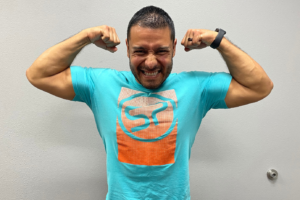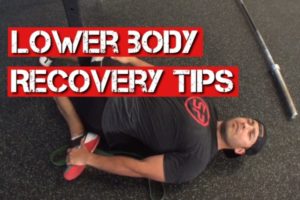
Everyone has experienced low back pain at some point in their life. Low back pain can be caused from a known injury or can come out of nowhere. Maybe you were lifting heavy at the gym and felt a pull or you woke up on the wrong side of the bead. Either way, back pain is back pain, right? Well… kind of. Low back pain is something you want to pay attention to if you experience it, because not all back pain is caused or treated the same way. Below are 4 of the common types of low back pain and how they differ from each other.
1. Muscle Strain – this commonly means a “pulled muscle.” This type of low back pain is very common and can differ in severity. It can happen suddenly or overtime. The lower back is prone to this type of injury due to its overall movement (twisting, bending, etc). When a muscle is strained or pulled, the soft tissue can become inflamed which can lead to muscle spasms, loss of range of motion, and ultimately pain. The pain is typically located in the lower back or hips, but does not radiate into the legs. A muscle strain requires rest from painful movements, soft tissue work and strengthening the other muscles around the lower back.
2. Hypermobility – this type of low back pain is essentially due to the lower part of the spine moving beyond the normal range of motion. Hypermobility is typically caused by a decrease in support and strength of the supporting structures of the low back. This can lead to an increased risk in other injuries, such has a muscle sprain or ligament sprain. Some individuals will not experience any symptoms with hypermobility, while others can have pain in the low back and hips, feel unstable or hear popping/clicking noises. The best way to counteract hypermobility of the low back is to strengthen the core/abdominals and the supporting spinal musculature.
3. Degenerative – this specific type of low back pain is usually associated with wear-and-tear on the spine itself. Everyone experiences some sort of degenerative changes to their spine with age, but the degree of severity differs. Degenerative changes can occur if we do not take proper care of our spine, leading to decreased flexibility, decreased strength, decreased core stabilization, etc. The most common type of degenerative changes in our spine happen in the discs, which are between every level of the spine. These discs provide a cushion/support for movement and over time, they can lose strength and size causing low back pain with prolonged sitting, bending & twisting. This type of low back pain typically experience relief with walking and changing positions.
4. Neurogenic – this type of low back pain is typically described as a “tingly/numbness” sensation that can radiate outwards from the low back. This is due to the fact that a nerve is being pinched/impacted somewhere in the spine. Depending on where the nerve is being affected will determine how far the pain travels; some people can feel this type of pain all the way down into their toes, while it can stop in the glute/hip region for others.
The culprits behind this type of low back pain are usually disc injuries or narrowing of the spine itself. These two things are treated very differently, but the primary goal for both is to “centralize” the pain; meaning the pain returns to the low back, leaving the lower extremity. This can be done through repeated motions, strengthening & flexibility exercises.
Regardless of what type of low back pain you may be experiencing, rest is not the answer! We have discussed this before, our spine is made to move… Motion is lotion!
As always, we hope this helps! If you have any questions or if you would like to read about certain topics, feel free to send us an email at TeamSP@SportsPerformancePT.com.
-Dr. Melanie

STAY CONNECTED
Instagram: CLICK HERE
Facebook: CLICK HERE
YouTube: CLICK HERE
Podcast: CLICK HERE
TUNE IN TO OUR PODCAST












